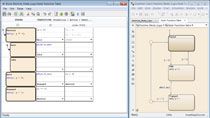Assessing Climate Related Transition and Physical Risks to Mortgage Portfolios
Physical risk is a critical aspect of the 2015 “Paris Agreement,” which places a binding obligation on the world’s governments to “make finance flows consistent with a pathway towards low greenhouse gas emissions and climate-resilient development.” Understanding physical risk is essential for effective decision-making. Regulators, customers, investors, and other stakeholders are driving financial institutions to do their part to transition to a low-carbon economy and manage exposure to climate-related risks, including physical risk. They’re using new data sources and developing new types of models, often leveraging methods from other scientific and engineering fields. Practitioners need software that provides a broad range of modeling functionality, flexible interfaces, rich visualization capabilities, collaboration, and review features to keep up with the pace of change in this area.
Learn how MATLAB® can get you started modeling both **physical** and transition climate risks. In a live demonstration, you will learn how to:
- Visualize flooding risk within a city (physical risk)
- Understand the impact of policies aimed at increasing the energy efficiency of buildings (transition risk)
- Model the impact of these risks on a portfolio of mortgages
MATLAB® offers powerful tools to help you assess physical risk and transition risk in various scenarios. By integrating physical risk data with other climate-related metrics, you can gain a comprehensive understanding of how physical risk influences financial outcomes. This session will also show you how to create models that account for physical risk, helping you make more informed decisions.
Published: 5 Oct 2021




